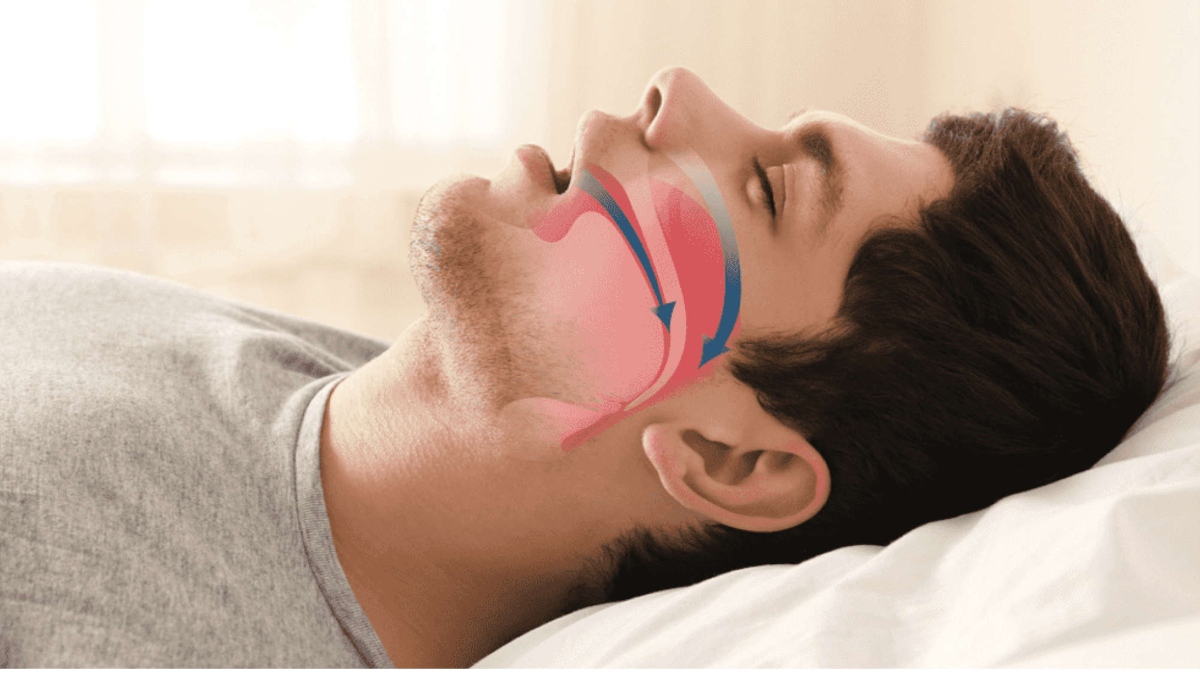


Obstructive Sleep Apnea condition where repetitive episodes of blockage of the entire upper airway (mainly the oropharyngeal tract) take place during sleep. This occurs when the muscles relax, the airway narrows or closes as the person inhales, hampering the breathing for 10 seconds or longer. This will lower the amount of oxygen in the blood and cause a buildup of CO2. This pattern can repeat itself 5 to 30 times or greater every hour, throughout the night. These disruptions impair the person’s ability to get deep, restful phases of sleep, resulting in the person feeling sleepy during waking hours.
SIGNS AND SYMPTOMS
• Dry mouth or pharyngitis, once you wake up
• Headache in the morning
• Trouble concentrating, forgetfulness, depression
• Restlessness during sleep
• Loud snoring
• Excessive daytime sleepiness
• Mood changes, including depression
FACTORS THAT CAUSE OBSTRUCTIVE SLEEP APNEA
The factors that cause Obstructive Sleep Apnea include:
Excess weight- Most but not all people with Obstructive Sleep Apnea are overweight. Fatty deposits around the upper airways can obstruct breathing. Obesity-related disorders, such as hypothyroidism and polycystic ovary syndrome, can also cause Obstructive Apnea.
Old age- The danger of Obstructive Apnea increases as the person ages but appears to level off in the 60s and 70s.
Narrowed airway- The person would possibly inherit naturally narrow airways. Or else, it would be the tonsils or enlarged adenoids that have blocked the airway.
Smoking- people who smoke are more likely to possess Obstructive Sleep Apnea.
Also alcohol consumption, use of sedatives can cause Obstructive Sleep Apnea and there is a higher possibility of having this condition amongst males.
DIAGNOSIS
The gold standard method used to diagnose sleep-disordered breathing is a comprehensive in-laboratory Polysomnography.
A home-based sleep study also available (a level 2 unattended study) contains limited channel devices that focus on a few core signals (for example, oxygen and an airflow sensor)
POSITIVE AIRWAY PRESSURE TREATMENT
Positive airway pressure (PAP) treatment device act as a pneumatic assist that allows the upper airway to be kept open. The device is applied to the person via the nose or mouth-nose mask overnight or during sleep hours at a set positive pressure. PAP therapy is indicated for all patients with an AHI (apnea-hypopnea index) greater than 15, regardless of the presence of comorbidities, type of work, and severity of symptoms.
SURGICAL TREATMENT
Over 70% of patients with Obstructive Sleep Apnea suffer from obesity; In patients with severe obesity (BMI > 40), bariatric surgery, including gastric bypass and bandage, is a weight-loss modality when conservative treatments have failed.
The maxillomandibular pre-stretching (MMA) is achieved through an osteotomy of the upper and lower jaw. Advancement of skeletal structures passively induces anterior displacement of the soft palate and tongue while widening the pharynx.
Tonsillectomy and adenoidectomy are the most common surgical procedures used to treat Obstructive Sleep Apnea in children and are highly effective. Patients with Obstructive Sleep Apnea generally have excess tissue in the oropharynx. Uvulopalatopharyngoplasty (UPPP), either conventional or laser-assisted (LAPP), is a widely used surgical procedure to treat Obstructive Sleep Apnea in select patients.
Continuous Positive Airway Pressure (CPAP) is highly effective in controlling symptoms, improving the quality of life and reducing the clinical consequences of Obstructive Sleep Apnea. This line of treatment must be considered as a first-line option. All patients with obesity should be encouraged to lose weight, and bariatric surgery may be considered in patients with BMI over 40. A multidisciplinary approach and implementation of educational programs will greatly improve the management of the disease.
The writer is Consultant Interventional Pulmonologist, Manipal Hospitals, Vijayawada.